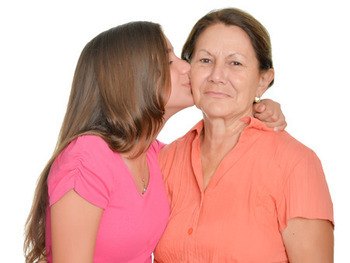 Osteoporosis is the most common metabolic bone disorder. Other diseases can cause lessening in bone mass. Hyperparathyroidism and
osteomalacia
both do. Hypocalcaemia (or hypocalcemia) is low serum calcium
condition that is often co-morbid with these other diseases, and can by
itself cause a loss in bone mass. In osteoporosis, however, the blood levels
of calcium and phosphorus are in the normal range. In osteoporosis there
is no increase in unmineralized osteoid, unlike in rickets.
Osteoporosis is the most common metabolic bone disorder. Other diseases can cause lessening in bone mass. Hyperparathyroidism and
osteomalacia
both do. Hypocalcaemia (or hypocalcemia) is low serum calcium
condition that is often co-morbid with these other diseases, and can by
itself cause a loss in bone mass. In osteoporosis, however, the blood levels
of calcium and phosphorus are in the normal range. In osteoporosis there
is no increase in unmineralized osteoid, unlike in rickets.
![]() What is transient osteoporosis of the hip?
What is transient osteoporosis of the hip?
The major features of osteoporosis as they present in the clinic are fragile bones and an increase in the rate of fracture. Under a microscope you can see the tiny changes in the bone tissue. Long columns of calcified structure in the bone include bony spicules, and in osteoporosis-afflicted bone, the spicules are thinner than normal. Some orthogonal joiners disappear, leading to a weaker overall structure. Transient osteoporosis of the hip is a rare form of osteoporosis that seems to have a separate etiology from most osteoporosis. Osteomalacia tissue has a high ratio of inadequately mineralized bone matrix to mineralized bone.
Bone, like other living tissue, is always being removed. The bony part (calcium compounds) are resorbed into the blood stream while new structure is formed. Why do bones lose mineral mass? Either the rate of resorption increases or the rate of deposition declines. Each happens in osteoporosis but in change in resorption rate is larger.
Genetics plays the biggest role in determining the risk of osteoporosis, but diet, exercise, and illness can also play factors. Calcium supplements have been shown to increase bone density in the short term, although it is not clear whether the effect persists after the supplements are stopped.
Infectious diseases occur when pathogens get inside the body. Animal to human disease is infectious but not contagious. Contagious diseases are infectious diseases that spread from person to person. Infectiousness refers to how many bacteria, pathogens, etc are needed to infect. Ebola is not very contagious but is very infectious. Malaria is not contagious (person to person) but very infectious.
Osteoporosis and other bone dieases are not contagious for sure. They're also probably not infectious. No pathogens cause bone disease.
 Osteoarthritis (also called degenerative disease) is the wearing down of
joints. Literally the joint can wear out - overuse in sports or repetitive
work can cause this condition. The cartilage goes away. Aging is the main
cause, and pretty much everyone has some osteoarthritis by age 70. Rheumatoid
arthritis is a different disease. It's an autoimmune disease that is thought
to have genetic and environmental causes. Gout is also a form of arthritis caused by build-up of uric acid crystals in the joints. Questions often arise if there is a connection between gout and osteoporosis, and the answer is "no". There have been tests that show uric acid concentrations in the blood are higher in people with poor bone health, but this is probably because they are both correlated with advanced age. Parathyroid hormone analogs used for treatment increase uric acid in the body so they increase the risk of gout.
Osteoarthritis (also called degenerative disease) is the wearing down of
joints. Literally the joint can wear out - overuse in sports or repetitive
work can cause this condition. The cartilage goes away. Aging is the main
cause, and pretty much everyone has some osteoarthritis by age 70. Rheumatoid
arthritis is a different disease. It's an autoimmune disease that is thought
to have genetic and environmental causes. Gout is also a form of arthritis caused by build-up of uric acid crystals in the joints. Questions often arise if there is a connection between gout and osteoporosis, and the answer is "no". There have been tests that show uric acid concentrations in the blood are higher in people with poor bone health, but this is probably because they are both correlated with advanced age. Parathyroid hormone analogs used for treatment increase uric acid in the body so they increase the risk of gout.
Cartilage is made of collagen (protein fibers), proteoglycans (fibers of proteins and sugars), and chondrocytes (living cells), as well as water.
The NIH Osteoporosis and Related Bone Diseases National Resource Center has a webpage about the difference between osteoporosis and arthritis here.
This NIH page also has information.
This isn't osteoporosis, but it is a related bone malady. See our page on this condition.
Osteogeneis imperfeacta is the most well known of the bone problems present at birth.
See our page on hypogonadism.
See also: osteoporosis and cancer.
